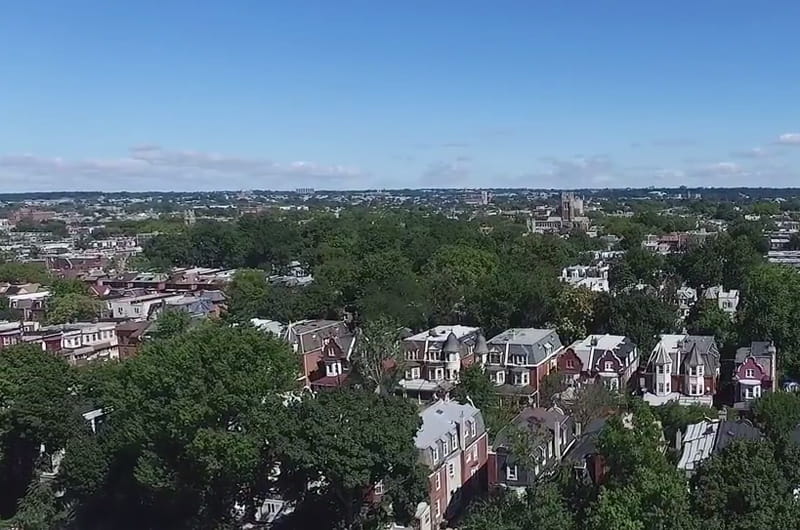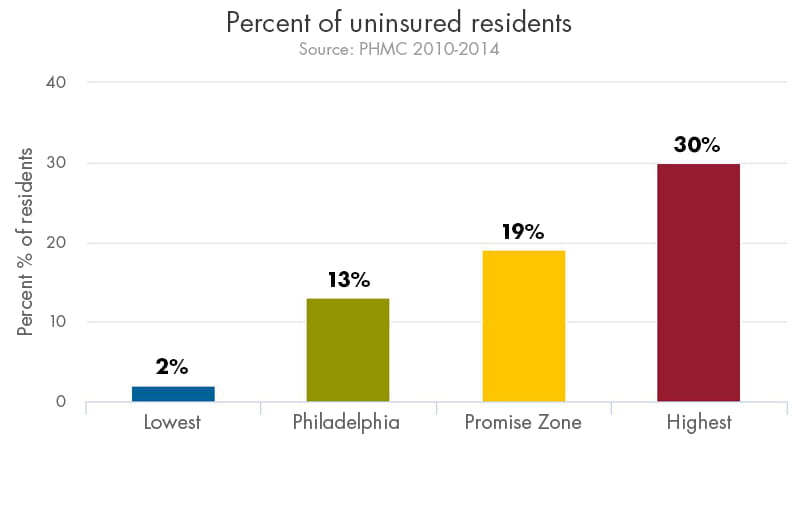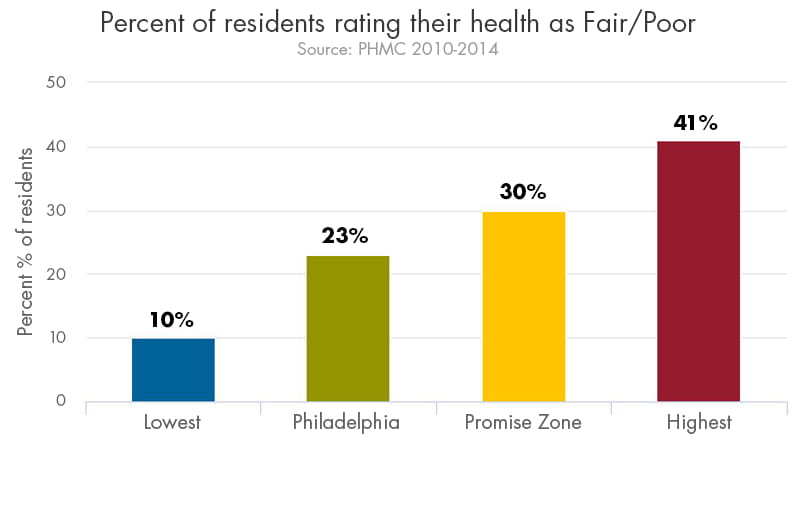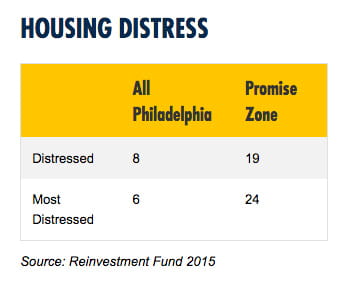Urban Health Collaborative Develops New Health Profile of West Philadelphia Promise Zone
 By Frank Otto
By Frank Otto

That health differences between neighborhoods is driven by social and economic conditions is no surprise to those in public health. As such, a new community health profile looked at both general health indicators and the underlying socioeconomic factors in the West Philadelphia Promise Zone.
A team led by Amy Carroll-Scott, PhD, assistant professor, and Jennifer Kolker, MPH, associate clinical professor and associate dean for Public Health Practice, both of the Urban Health Collaborative in the Dornsife School of Public Health, put together the profile to provide a snapshot of health and related conditions in the Promise Zone.
“We hope this compilation of publicly available data creates a picture that community leaders, advocates, health care providers and public health professionals can use to take action to improve the health and wellness of individual Promise Zone residents, as well as create a healthier neighborhood environment that can be enjoyed by all,” Carroll-Scott said.
In 2014, the federal government designated a group of neighborhoods in West Philadelphia as a Promise Zone based on indicators of poverty, unemployment, housing, education and violence – all factors that influence health – as well as capacity for positive change for its residents. Promise Zones were established in an attempt to spur development and community-level improvement via preference for federal grants, and committees formed to address community development strategies, including health and wellness.

Carroll-Scott, Kolker and their team of staff and students compiled and analyzed data spanning from 2009 until 2014 to put together this profile to help provide context for Promise Zone-focused health improvement efforts, and the ability to look at change over time.
First, looking at access to care, the team found that 19 percent of people in the Promise Zone’s neighborhoods were without insurance, compared to 13 percent in the entire city of Philadelphia. Without insurance, people often don’t seek out preventive care and end up with costly injuries or illnesses that could have been stopped earlier.
Along the lines of prevention, it was also found that people in the promise zone were more often smokers and drinkers of sugary drinks than the rest of Philadelphia (27 vs. 24 percent and 41 vs. 35 percent, respectively). Both smoking and sugary drink intake are risk factors for the development of chronic disease.
On top of that, the researchers also reviewed data on “self-related health,” a measure of the level of health people experience or feel. Respondents to the survey on this were asked to rate their health on a scale ranging from “poor” to “excellent.”

“Many studies conducted in diverse populations around the world have found that, although self-rated health is only moderately associated with physicians’ objective assessment of health, it is the one, single measure of health that is independently associated with mortality,” Carroll-Scott said. “In other words, it has a predictive ability better than many other more objective measures of health. It is thought that this subjective measure captures something important about the experience of health that objective measures cannot.”
In the West Philadelphia Promise Zone, residents rated their health in the fair/poor range 30 percent of the time. In the rest of Philadelphia, residents called their health just fair or poor only 23 percent of the time.
Something that the average person might not directly associate with health is housing. But public health researchers pay special attention to it, especially in this profile, which found significant disparities between the Promise Zone and the city.
“Housing quality is significantly worse in the Promise Zone than the rest of Philadelphia as a whole,” Kolker explained. “This has a direct effect on health, as individuals and families experiencing unstable housing or living in unstable home environments are more likely to experience stress that results in poorer mental and physical health.”

According to the data, the percentage of residents living in “distressed” housing is more than twice the Philadelphia average, 19 to 8 percent. A much wider disparity is found when it comes to the “most distressed” classification: Promise Zone residents’ housing falls into that category four times more than the rest of Philadelphia, 24 to 6 percent.
While the Promise Zone numbers are worse than the city as a whole, Carroll-Scott and Kolker pointed out that Philadelphia itself doesn’t compare favorably to the rest of the United States, lagging behind other cities.
“We need to take a hard look and step up to strategize how to improve the health and well-being of our neighbors,” Kolker said.
As such, the Urban Health Collaborative team think their findings point to several needs in the Promise Zone. First, they believe there is a need for support of investment in “health-supporting resources.”
“Access to quality, affordable health care is an important piece of this, but not the only one,” Carroll-Scott said. “Research has repeatedly shown that health care is only about 10 percent responsible for health and social factors — such as race, socioeconomic status and neighborhood environment — are about 80 percent responsible.”
There needs to be a combination of community health advocacy with efforts to advocate for economic inclusion, workforce development, better education, better public safety and housing security, among other items, according to Carroll Scott.
Equally important is the need to set up better and more publicly available community health data to allow for this type of advocacy to proceed in a helpful way.
“Right now, there is no data in Philadelphia that is representative at the neighborhood level that is collected in a similar way across the entire city,” Kolker said. “This is problematic because it does not allow residents of Mantua (in the Promise Zone) to know how their health differs from nearby Spruce Hill, or from the city of Philadelphia as a whole. And that makes it difficult for neighborhood leaders to advocate for new programs or policies, or even to look at how current programs and services may or may not be working.”
Those interested in reading the full community health profile can check it out here.